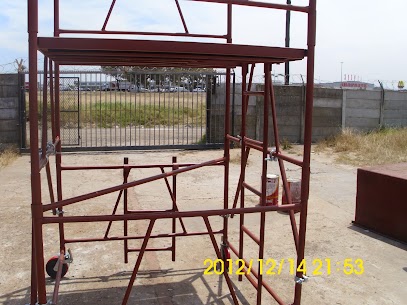
Scaffolding Safety – Do’s and Don’ts
Working on scaffolding often raises questions about the safety of the workers. Scaffolding structures that have been erected properly by trained professionals and inspected before use are completely safe. Today, most scaffolding suppliers offer installation and repair services as well as ensuring that the scaffolding remains in good condition. For scaffolding to be completely safe, there is certain safety measures and precautions that need to be followed to ensure worker safety.
The Do’s of Scaffolding Safety:
1. Ensure all the workers are properly trained before they start working on a scaffolding structure. Training must be provided by a qualified professional and should include how the workers can identify potential threats.
2. Always have the scaffold inspected by trained professionals before starting construction work. This will ensure that the scaffold is safe and in proper working condition. Always have the scaffold erected, moved or dismantled under supervision.
3. Ensure that the workers wear protective gear when getting on the scaffold structure. This includes hard hats, sturdy boots, tool lanyards etc.
4. Ask the workers to be aware of the others working around them and their surroundings. If they notice any improper use or improper practice, they should get off the structure and notify the supervisor immediately. The carelessness of one worker could put everyone at risk.
5. When required, use proper personal fall arrest systems so that the workers are not at risk. Scaffolding suppliers can help you with that too.
The Don’ts of Scaffolding Safety:
1. Don’t let the workers leave any tools or equipment on the scaffolding structure after their shift has ended. Without supervision, these items could be blown off the scaffolding or could cause a worker to fall.
2. Don’t overload the scaffolding under any circumstance. Inform the workers about the maximum load that can be on the scaffolding and ensure that they exceed this limit. Normally, scaffolding structures can bear more than four times their load capacity. But you should not risk it.
3. Don’t allow the use of ladders or boxes on the scaffolding to increase the height. If a worker can’t reach an area, you should raise the platform. Stilts can be used in some cases, only when the height of the guardrail is equivalent to the height of the stilts.
4. Don’t allow workers to get on the structure if the scaffold appears to have been tampered with in any way or if any of the components are missing. Also, do not allow the workers to climb on any areas of the scaffolding that they are not supposed to.
5. Don’t allow the workers to use the structure if it is covered in mud, ice or snow. The structure shouldn’t be used during adverse weather situations such as sleet, rain, snow and strong winds.
These are the do’s and don’ts of using scaffolding structures safely. Following these, you can be assured that there will be no scaffolding related accidents on your construction site.